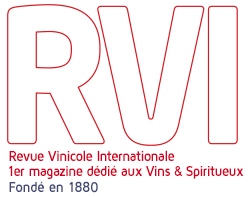Champagne in China.
Champagne has just reached the one million bottles barrier in China and wine growers of the Champagne region, always eager for new markets, are switching to higher gear. « Will China succumb to effervescence ? ». Without making of China an Eldorado, Jean-Louis Martin, Manager for emerging markets at Crédit Agricole, reminds us that « the number of wealthy customers is increasing and a middle class is arising who can afford to purchase a bottle of champagne. We are speaking of about 15 million individuals with an annual income of $ 30,000, and there will be 200 million of them in 2025.
Luxury consumption is also on the increase : now at 5%, it should reach 18% of the global consumption, be it for the social status it represents or merely to look flamboyant ». Such parameters should promote the sales of champagne bubbles, even if the Chinese consumer, sensitive to the « French Paradox », is more interested in red wines and remains with little awareness of said bubbles.
« Collective actions are lacking to present the culture of champagne in the way Cognac inter-branch organisations did it » according to Dr Huai-yuan Han, a specialist of the Chinese economy and member of « The Wine, Place and Value Research » research group. Be it only to associate consumption of champagne with success or festive moments, as in France.
Individual actions by individual wine growers is not enough. » But the inter-branch policy does not go in the direction of collective promotion, in China or elsewhere, but in the direction of protecting the appellation (with a yearly total budget of € 2 million, with the help of the 15% global envelope of the CIVC).
China has recognised the banning of the usage of Champagne as a name for sparkling wines, but the inter-branch organisation works on its recognition as a PGI, which cognac gained in 2010. « Any bottle of counterfeit champagne is quickly detected by the administration and fraudsters face heavy sentences, confirms Jean-Luc Barbier, General Manager of CIVC. Protection of the Champagne appellation only needs a simple administrative bill, but much effort is needed to convince the Chinese government ».
An upsurge of events
Sales in China have seen an increase of 90% in 2010, making it one of the first 20 millionaire markets. A growth of 45% of shipments towards Hong Kong, in 15th position with 1.25 million bottles should also be pointed out, as well as a probable part of the shipments towards Singapore, in 16th position at 1.21 million bottles. In cumulated figures, China probably ranks, therefore, among the 10 first consumers of champagne.
China had imported only 8,000 bottles in 1998 and ranked in 108th position. The figures raised to 21,000 bottles in 2000 (82nd position), reached 500,000 in 2006 and China was then in 27th position.
« Distribution networks are still at the stage of storage and an increase of sales can be noticed for the end of year feasts, as in western countries » says Thibault le Mailoux, Communication Manager at CIVC, who looks forward to the opening of a Chinese office to speed up discussions on PGI recognition … and sales.
Some wine growers of Champagne have already moved in aggressively through this opening to be present on such a promising market. Pernod-Ricard among them, with Mumm and Perrier-Jouet, has taken advantage of its powerful distribution network and of the strong presence of its Martell cognac and Chivas whisky. « China still has a low penetration rate as compared to a mature market such as Japan, the first market for the upper range champagnes, comments Pierre-Aymeric Du Cray, Worldwide Commercial Manager, or even compared to Hong Kong, where champagne is assisted by consumption in grand hotels, notably during Sunday brunches with a champagne buffet, and by wealthy female consumers, who love it very much ».
Mumm already tripled its sales within three years by investing into such events as Formula 1 races, in partnerships with luxury brands such as Christofle, Chanel or Van Cleef, in private parties with affluent consumers and in tasting sessions with food and champagne matches and training into the art of sabring champagne. « We want to show the magical and festive moments, but without going too fast, to avoid a fashion effect for champagne ».
Barons de Rothschild champagne, initiated in 2005, sent its first bottles in 2009, assisted by « its name and the five arrows emblem, which is known in China, and obviously surfing on the Lafite Rothschild dynamics, who has the same distributor, mentions Frédéric Mairesse, General Manager. We are using our wine ambassadors to present champagne at the beginning of meals, during French dinner parties which are well reputed among companies.
Consumers are starting to be aware of prices and we must be careful to harmonise them on the Asian area and to be present to assist importers ». This is confirmed by Jia Peng, Manager of the World Wine Education Centre in Shanghai : « Five years ago, Chinese importers were asking if they could buy champagne at €5. They now know the brands and prices, even though they still want to buy cheap and resale at very high prices. Champagne cannot be sold at any price ; if it is not known, a brut without a vintage year cannot be sold at a higher price than a recognised brand such as Moët, sold at 420 CNY (about €40) at Carrefour ».
Jia Peng also reminds us that « the European food and wine matches concept is still difficult to implement in China. Champagne can more easily be developed among the 18 to 35 age group, who test it out of curiosity or to show off, but who consume champagne mainly in bars and karaokes ».
Major wine growers are already playing their cards but most try to develop their large scale export with the support of the SGV (Syndicat Général des Vignerons), who last year organised the first large scale export trade fair in Singapore.
November 2012




